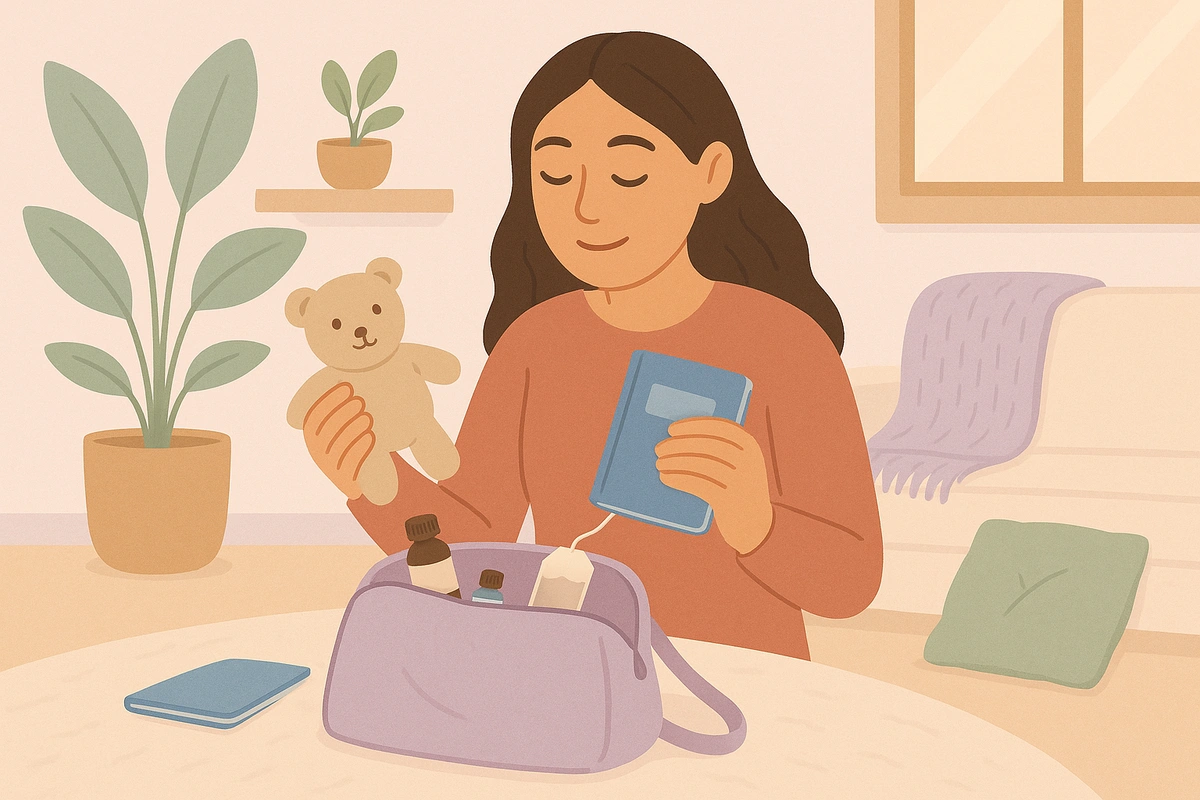Packing a calm-down kit gives you immediate access to personalized tools and comfort items when stress overwhelms your thinking. This portable collection of sensory items, grounding techniques, and emergency contacts helps you quickly shift from anxiety to calm during overwhelming moments.

Create a calm-down kit by gathering specific tools and resources that help you manage stress, anxiety, or emotional overwhelm. This portable collection puts proven coping strategies right at your fingertips when your thinking becomes clouded by intense emotions.
Stress and anxiety hit fast and shut down your ability to think clearly. Your heart pounds, your breathing gets shallow, and you forget every coping skill you know. A well-stocked calm-down kit becomes your emergency toolkit during these moments, giving you immediate access to sensory grounding, comfort items, and clear instructions when your mind goes blank.
Stress and anxiety trigger your fight-or-flight response, flooding your body with stress hormones that prepare you for danger. During these episodes, your prefrontal cortex shuts down while your emotional brain takes control, making it hard to remember or use coping skills.
Calm-down kits work because they provide immediate sensory input that activates your parasympathetic nervous system. Sensory grounding through touch, smell, and sight helps regulate your nervous system and brings you back to the present moment when anxiety pulls you into worry spirals.
The physical act of reaching for your kit creates a behavioral interruption that breaks the anxiety cycle. This simple action shifts your focus from internal distress to external problem-solving, which engages your rational thinking and reduces emotional intensity.
Written instructions eliminate the cognitive burden of remembering complex techniques during crisis moments. Research shows that having predetermined coping strategies readily available significantly improves emotional regulation when stress impairs memory and decision-making abilities.
Familiar comfort objects trigger positive associations and memories that counter anxiety's negative emotional state. Attachment research demonstrates that transitional objects provide security and emotional regulation by activating feelings of safety and connection.
The portability factor ensures you can access coping tools regardless of location or circumstances. This consistency builds confidence in your ability to manage stress and reduces anticipatory anxiety about future overwhelming situations.
"I forget to use my kit during stressful moments" - This happens to most people initially. Set phone reminders to check your stress level throughout the day and practice reaching for your kit during mild stress to build the habit.
"The items don't seem to help when I'm really overwhelmed" - Start with simpler, more intense sensory items like ice cubes, strong mints, or textured objects that provide immediate grounding when thinking is severely impaired.
"I feel embarrassed using my kit in public" - Choose discrete items that look like normal objects, such as a stress ball that looks like a regular ball or essential oil in a pen-style container.
"My kit is too big or inconvenient to carry" - Create multiple smaller versions with just 2-3 most effective items for different locations rather than one large comprehensive kit.
"The items lose their effectiveness over time" - This is normal as your nervous system adapts. Rotate items regularly and introduce new sensory experiences to maintain effectiveness.
"I can't afford expensive items for my kit" - Many effective calm-down tools cost very little, such as smooth stones, fabric scraps, printed quotes, or homemade essential oil blends.